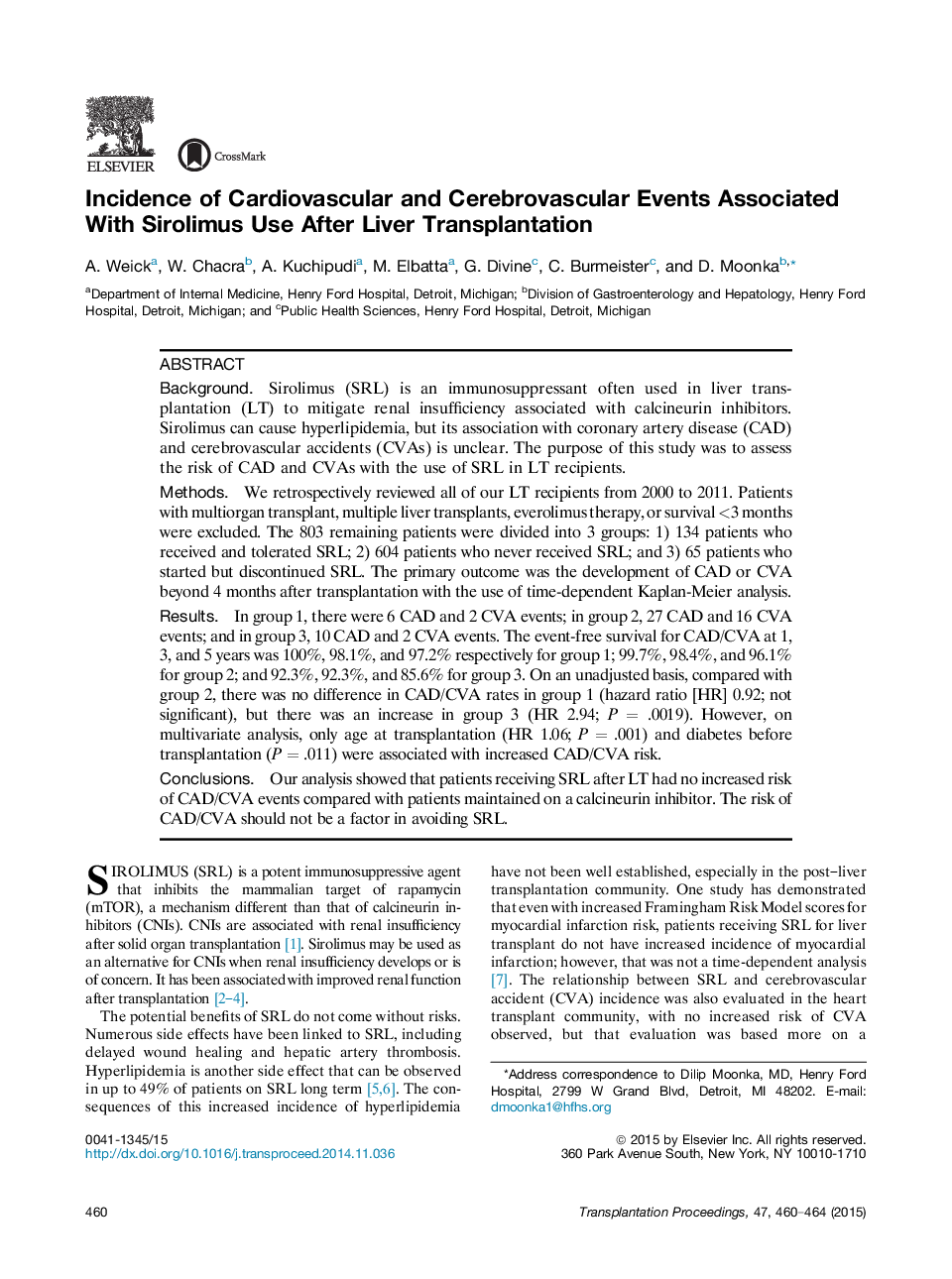| کد مقاله | کد نشریه | سال انتشار | مقاله انگلیسی | نسخه تمام متن |
|---|---|---|---|---|
| 4257627 | 1284547 | 2015 | 5 صفحه PDF | دانلود رایگان |
• Sirolimus after liver transplantation does not increase cardio/cerebrovascular event rates.
• Age at transplantation is a risk factor for cardio/cerebrovascular events.
• Diabetes before transplantation is a risk factor for cardio/cerebrovascular events.
BackgroundSirolimus (SRL) is an immunosuppressant often used in liver transplantation (LT) to mitigate renal insufficiency associated with calcineurin inhibitors. Sirolimus can cause hyperlipidemia, but its association with coronary artery disease (CAD) and cerebrovascular accidents (CVAs) is unclear. The purpose of this study was to assess the risk of CAD and CVAs with the use of SRL in LT recipients.MethodsWe retrospectively reviewed all of our LT recipients from 2000 to 2011. Patients with multiorgan transplant, multiple liver transplants, everolimus therapy, or survival <3 months were excluded. The 803 remaining patients were divided into 3 groups: 1) 134 patients who received and tolerated SRL; 2) 604 patients who never received SRL; and 3) 65 patients who started but discontinued SRL. The primary outcome was the development of CAD or CVA beyond 4 months after transplantation with the use of time-dependent Kaplan-Meier analysis.ResultsIn group 1, there were 6 CAD and 2 CVA events; in group 2, 27 CAD and 16 CVA events; and in group 3, 10 CAD and 2 CVA events. The event-free survival for CAD/CVA at 1, 3, and 5 years was 100%, 98.1%, and 97.2% respectively for group 1; 99.7%, 98.4%, and 96.1% for group 2; and 92.3%, 92.3%, and 85.6% for group 3. On an unadjusted basis, compared with group 2, there was no difference in CAD/CVA rates in group 1 (hazard ratio [HR] 0.92; not significant), but there was an increase in group 3 (HR 2.94; P = .0019). However, on multivariate analysis, only age at transplantation (HR 1.06; P = .001) and diabetes before transplantation (P = .011) were associated with increased CAD/CVA risk.ConclusionsOur analysis showed that patients receiving SRL after LT had no increased risk of CAD/CVA events compared with patients maintained on a calcineurin inhibitor. The risk of CAD/CVA should not be a factor in avoiding SRL.
Journal: Transplantation Proceedings - Volume 47, Issue 2, March 2015, Pages 460–464
